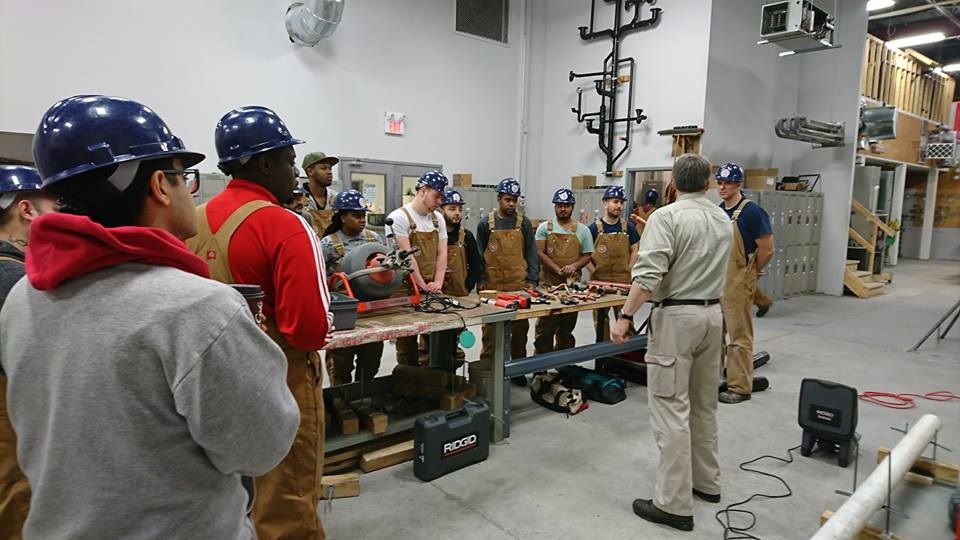Updated December 2025
There's no doubt that gas-powered appliances play an extremely important role in our lives. They're used for cooking meals, safely storing food, heating buildings, and many other purposes in residential, commercial, and industrial settings.
However, they must be properly installed and maintained by trained professionals to function effectively and safely.
Installing and servicing these types of appliances is the job of the gas technician. It's a challenging and rewarding occupation that can also pave the way for plumbing, HVAC, and appliance technician work.
If you're interested in pursuing a gas tech career in Ontario, your specific duties, salary, and job opportunities are highly dependent on the level of licensing you achieve.
The starting point for work in this field is the Gas Technician 3 training program. With additional training, you can earn the more advanced G2 and G1 certifications.
Wondering what exactly is the difference between a level 3 and level 2 licence? Read on for a full breakdown.
Launching your Trades Career with Gas Technician 3 Training
If you have little or no prior experience in the gas industry, the Gas Technician 3 program is the best way to begin. This first level of licensing is required before continuing on to the Gas Technician 2 or 1 certification.
It's also a mandatory, entry-level certification for working as an HVAC (heating, ventilation, and air conditioning) technician.
During pre-apprenticeship gas tech 3 training, you'll learn the fundamentals of working with hand and power tools, electricity, schematics and drawing codes, and the safe handling of propane and natural gas.
The curriculum is designed and approved by the Technical Standards and Safety Authority (TSSA), which ensures safety compliance in this industry in Ontario.
After completing the gas technician 3 training, you must pass the TSSA exam before starting work as a licensed gas technician.
One of the key features of the G3 licence is that you can only work under the direct supervision of a gas technician with a level 2 or 1 certification. With this supervision, you're allowed to work on gas equipment up to and including 400,000 British Thermal Units per Hour (BTUH).
Taking it to the Next Level with Gas Technician 2 Training
The Gas Technician 2 program builds on concepts you learned in the Gas Technician 3 course, with additional training on other kinds of gas-powered equipment. The program provides hands-on training on piping, appliances, heating systems, and venting practices.
The G2 certification is the minimum license necessary to work independently (without supervision) as a gas technician in Ontario.
With a Gas Technician 2 certification, you can independently install, maintain, and test various gas lines, meters, regulators, and appliances with an input up to 400,000 BTUH.
The approximately 480-hour program is broken up into 15 modules, covering topics such as:
- Advanced piping and tubing systems
- Mechanical and electric controls
- Domestic and non-vented appliances
- Hydronic and forced warm air heating systems
- Air handling and venting practices
- Water heaters and combo systems
- Gas meters, pressure regulators, and relief valves
Led by highly trained instructors with expertise in the field, the structured pre-apprenticeship course develops students into well-rounded gas technicians.
After this course, you'll understand buildings as a system, electricity basics, and the business practices that will support your career growth.
Certified professionals with gas technician 2 training can install, inspect, alter, purge, activate, repair, service, or remove natural gas or propane appliances.
Once you've completed level 2, you'll be qualified to supervise technicians that have a G3 licence.
Career Development with Gas Technician Certification
With a serious shortage of skilled trade workers in Canada, now is the perfect time to launch your gas technician career.
Most graduates are employed by gas utility companies or private gas servicing companies.
On the job, there tends to be lots of variety from day to day. In addition to the tasks we already mentioned, your duties as a gas technician could include:
- Responding to gas escape calls and assisting with gas fires
- Advising clients on safety features and proper handling
- Testing and replacing defective equipment
- Converting appliances to natural gas
After working for two years (4,000 hours) in the field with a level 2 certification—including 500 hours on systems with a firing rate above 400,000 BTUH—you'll be qualified to pursue a Gas Technician 1 certification.
This is the highest level of certification. With your G1, you can work independently on any type of gas equipment. Eventually, you'll become an expert and can even start your own business.
Looking to get started with gas technician training?
Your next step is to speak with admissions. An advisor will guide you through Herzing's gas technician programs, costs, financial aid, how to apply, and more.
Chat live with an advisor now. Or click below to explore the program in more detail. We're here to help!






